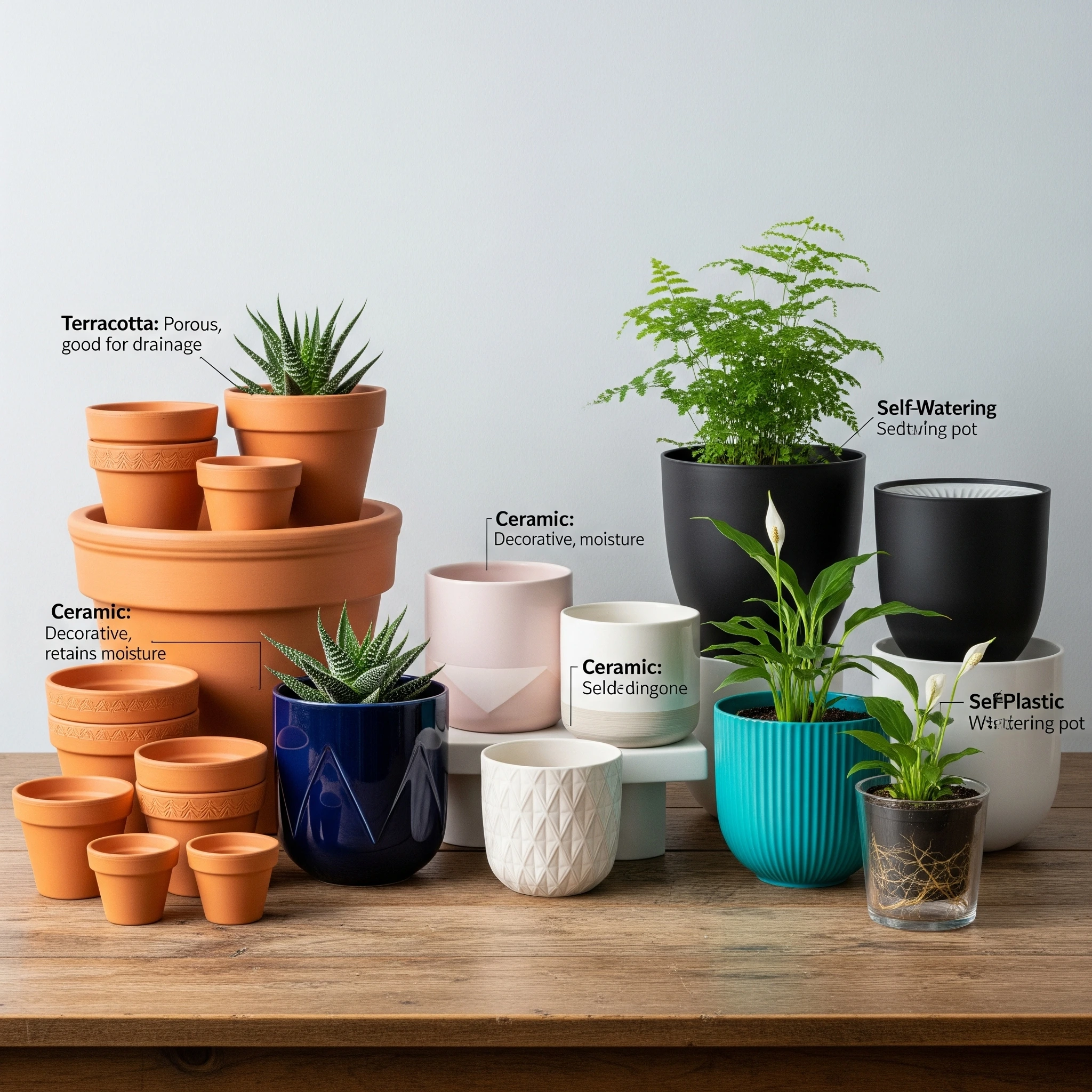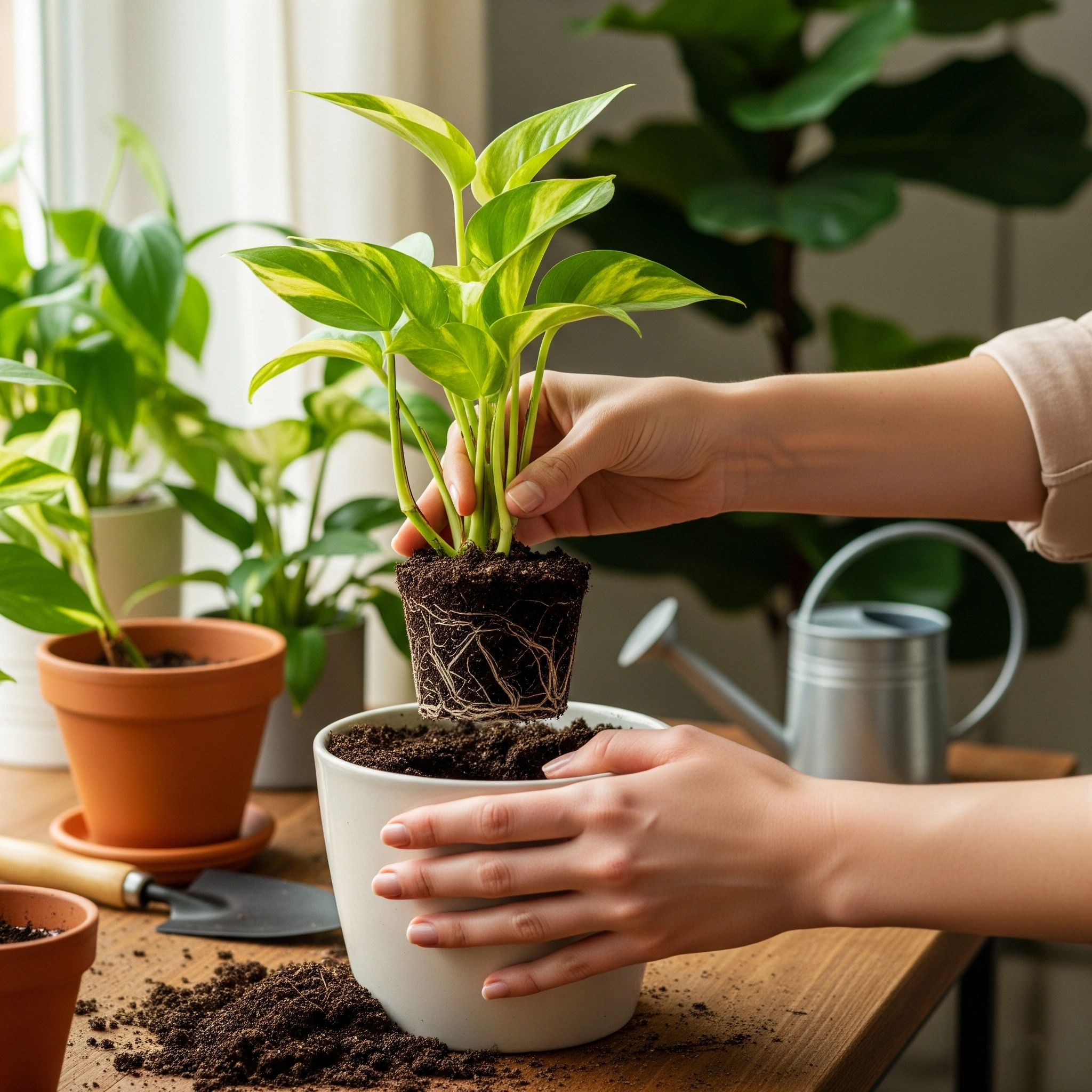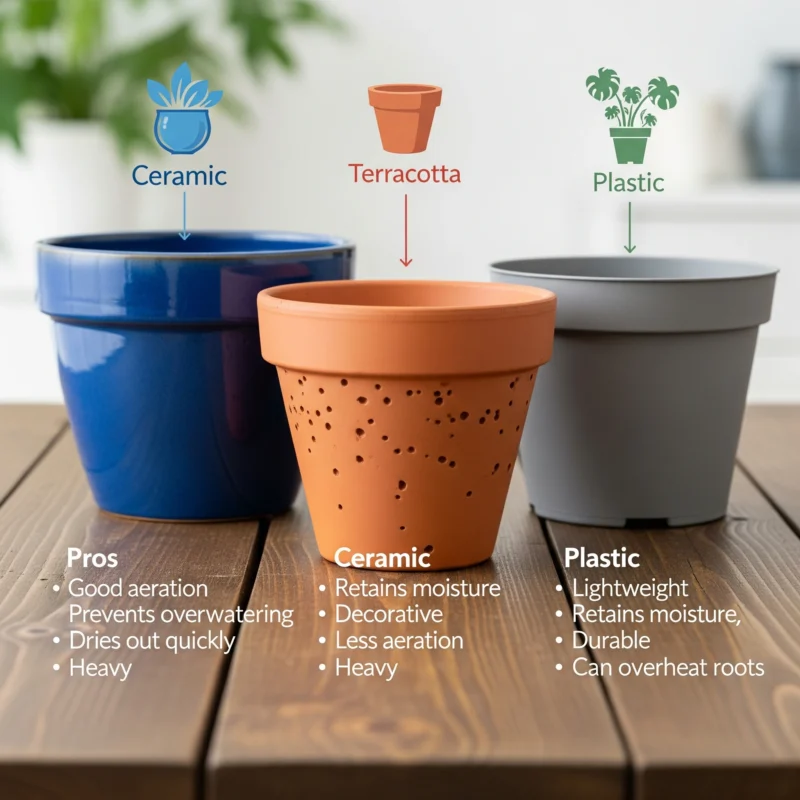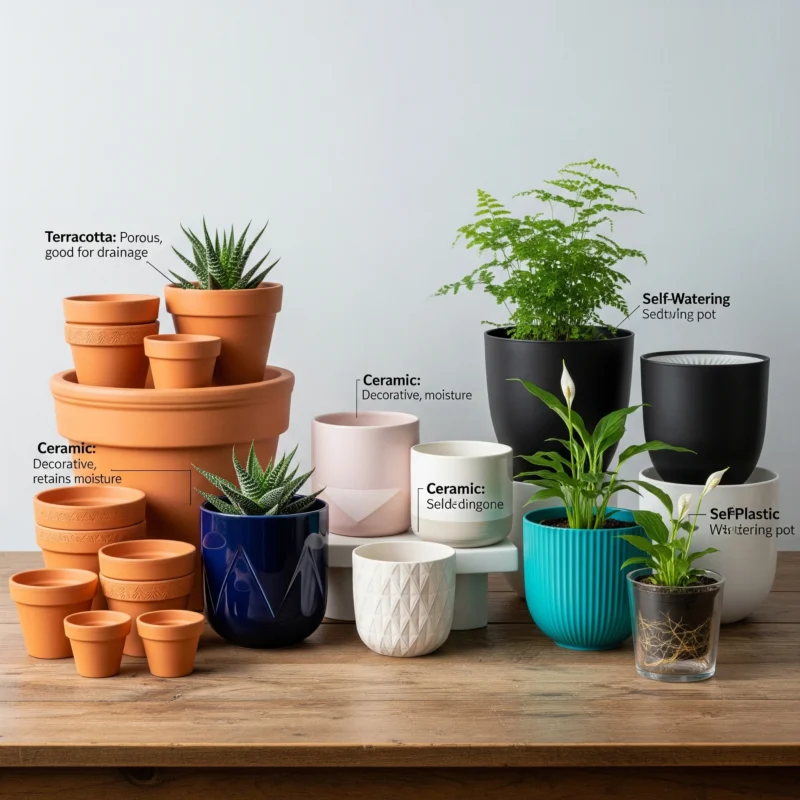Choosing the Best Pots for Indoor Plants: A Guide to Size, Material & Style (Australia & Canada)
Hello, plant lovers in Australia and Canada! You’ve found the perfect plant and the right soil, but have you ever stopped to consider the most important piece of all—the pot? Often seen as a simple vessel, the right pot is a silent partner in your plant’s success, providing a stable home and a perfect environment for growth.
Welcome to the ultimate guide to the best pots for indoor plants! This comprehensive resource will demystify the choices, from size and material to style and drainage. We’ll empower you with the knowledge to make confident decisions, ensuring your green companions not only look beautiful but also thrive for years to come. Let’s find the perfect home for your plant!
The pot you choose has a direct impact on your plant’s health. It influences:
- Watering: The material and size of a pot determine how quickly the soil dries out.
- Root Health: Good drainage and the right size prevent root rot and allow roots to breathe.
- Plant Growth: A well-sized pot encourages a plant to grow at a healthy pace.
- Aesthetics: The style of the pot adds to the overall look of your plant and complements your home decor.
Personal Note: As a beginner, I made the mistake of putting a tiny plant in a giant pot, thinking it would grow faster. It didn’t! The pot was holding too much moisture, and the roots rotted. I quickly learned that how to choose a plant pot is a critical skill.
How to Choose the Best Pots for Indoor Plants: A Step-by-Step Guide
Ready to master the art of pot selection? Follow this guide on how to choose a plant pot to ensure your plants thrive.
1. Size Matters: Matching the Pot to the Plant
- The Golden Rule: Choose a pot that is just a little bit larger than the plant’s current root ball.
- The “How”: When repotting, move up to a pot that is only 1-2 inches (2.5-5cm) wider in diameter than the current one. This is key to finding the right plant pot sizes.
- What to Avoid: A pot that is too large will hold too much moisture, leading to root rot. A pot that is too small will cause the plant to become “root-bound,” which stunts its growth.
Pro Tip: A good way to check if your plant is root-bound is to gently slide it out of its pot. If you see roots circling the outside of the soil ball, it’s time to repot!
2. Material: Understanding the Pros & Cons
The material of the pot is a key factor in successful plant care. Here’s a breakdown of common pot materials for plants:
- Terracotta/Clay Pots:
- Pros: Porous and breathable, which allows water to evaporate quickly, preventing root rot. Great for plants that prefer drier soil (e.g., succulents, cacti).
- Cons: Dries out quickly, so may not be ideal for moisture-loving plants. Can be heavy.
- Ceramic/Glazed Pots:
- Pros: Non-porous, retaining moisture for longer. Great for moisture-loving plants (e.g., ferns). Often very decorative.
- Cons: Can lead to overwatering if not managed carefully.
- Plastic Pots:
- Pros: Lightweight, affordable, and retain moisture well. Often comes with great drainage.
- Cons: Can trap too much moisture, leading to root rot. Not as breathable as terracotta.
- Woven Baskets:
- Pros: Adds texture and a beautiful, natural look.
- Cons: Not for direct planting. Always place a plastic pot with a saucer inside the basket to prevent rot and water damage.
3. Drainage is Non-Negotiable
- This is the single most important rule when learning how to choose a plant pot. All pots MUST have drainage holes.
- The “Why”: Drainage holes allow excess water to escape, preventing the roots from sitting in soggy soil and rotting.
- What to do: If your decorative pot has no drainage holes, use it as a “cachepot” (an outer pot) and keep your plant in a plastic nursery pot inside. This is a common and effective technique used by experts.
4. Style: Finding the Perfect Fit for Your Home
- The pot’s style is where you can express your personality and creativity.
- The “How”: Match the pot style to your home decor (minimalist, bohemian, modern). Use different textures and colours, but keep the palette cohesive for a harmonious look. (Internal Link: 20+ Creative Indoor Plant Styling Ideas)

The Ultimate Potting Guide: Tips for a Thriving Plant
Once you have your pot, here’s how to ensure your plant is set up for success.
- Layering: Place a coffee filter or a small piece of mesh over the drainage hole to prevent soil from falling out while still allowing water to flow.
- Repotting: Repotting is a stressor for plants. Do it gently, in the spring or summer, and water thoroughly after repotting to help it settle.
- Cleaning: Always clean and sterilize old pots before reusing them to prevent the spread of diseases or pests. (Source: Gardening Australia – Repotting Plants)

Common Potting Mistakes to Avoid
- Potting in a pot that is too large: The number one mistake! It causes overwatering and root rot.
- Using a pot with no drainage: A death sentence for most plants.
- Using heavy garden soil: It compacts and suffocates the roots. Always use a proper potting mix.
- Not cleaning old pots: Can introduce diseases and pests to your new plant.
Best Pots for Indoor Plants Q&A: Your Top Questions Answered
Is it okay to use a pot without drainage holes?
No, it is not recommended. A pot without drainage holes will trap water, leading to root rot. Always choose a pot with drainage, or use a plastic nursery pot inside a decorative pot (cachepot).
When should I repot my plant?
You should repot your plant when it becomes root-bound, which usually happens every 1-2 years. Signs include roots growing out of the drainage holes or the plant becoming top-heavy.
What is the best material for a beginner?
For a beginner, a terracotta pot is a great option. It is porous and helps prevent overwatering by allowing the soil to dry out faster. This makes it more forgiving for those still learning their watering routine.
How can I choose the right pot size?
The best pot size is slightly larger than the root ball. When repotting, move up to a pot that is only 1-2 inches wider in diameter. This allows the plant to have new soil to grow into without being overwhelmed by too much moisture.

Conclusion: Ready to Pot Your Way to a Greener Life?
Mastering the art of choosing the best pots for indoor plants is a key step in becoming a confident plant parent. By understanding the importance of size, material, and drainage, you can provide your plants with the perfect home to thrive.
So, take a look at your collection and make sure every plant is in the right pot. It might be the secret to unlocking their full potential.
What’s one best pots for indoor plants tip you found most helpful? Share your thoughts and questions below!


